Quince
Seeds
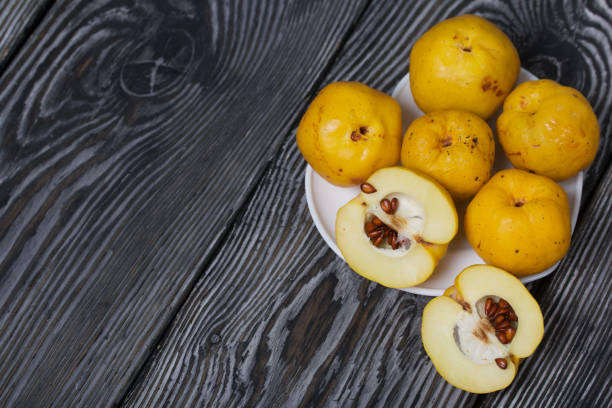
Quince (Cydonia oblonga) is a deciduous tree that produces pear-shaped, aromatic fruits. The seeds of the quince fruit are small, brown, and glossy, encased within the fruit’s core. Though often overlooked, these seeds have been used for centuries in traditional medicine and culinary practices. Quince seeds are known for their mucilaginous properties, which means they can produce a thick, gel-like substance when soaked in water. This characteristic makes them valuable in both medicinal and cosmetic applications.
1. Size:
- Quince seeds are small, typically about 5 mm in length, and oval in shape. They are slightly flattened with a smooth, hard outer surface.
2. Color:
- The seeds are dark brown to reddish-brown, with a shiny, polished appearance.
3. Texture:
- Quince seeds are hard and smooth when dry. When soaked in water, they become coated with a gelatinous layer, which gives them a slippery, mucilaginous texture.
4. Fragrance:
- Quince seeds have a faint, slightly nutty aroma when crushed, but they are not particularly fragrant on their own.
5. Uses:
Quince seeds are sometimes used in cooking to add a gelatinous texture to desserts, jams, and jellies. The mucilage produced by the seeds when soaked can be used as a natural thickening agent in various recipes.
In traditional medicine, quince seeds are often used for their soothing properties. The mucilage from soaked seeds is commonly used to treat sore throats, coughs, and gastrointestinal issues. It is believed to coat and soothe mucous membranes, providing relief from irritation and inflammation.
The gel-like substance produced by quince seeds is sometimes used in cosmetic formulations, particularly in natural skincare products. It is valued for its moisturizing and soothing properties, making it a popular ingredient in lotions, creams, and hair conditioners.
6. Habitat:
- Quince trees are native to the temperate regions of Western Asia and Eastern Europe. They thrive in well-drained soil and full sun, often found in orchards or cultivated gardens. The trees are hardy and can withstand a variety of climatic conditions, making them a popular fruit tree in many regions.
7. Cultural and Spiritual Significance:
Quince has a long history of use in various cultures, particularly in the Middle East and Mediterranean regions. The seeds, though less commonly used than the fruit, have been employed in traditional remedies and culinary practices for centuries. In some cultures, quince seeds were used to make a soothing drink or gel, believed to have various health benefits.
While quince seeds are not commonly associated with specific spiritual practices, the quince fruit itself has been considered a symbol of love, fertility, and prosperity in various cultures. The seeds, as part of the fruit, may carry some of these symbolic meanings, particularly in rituals or traditions involving fertility and abundance.
Spiritual Properties
Protection and Purification: Quince seeds, like the fruit, are sometimes used in spiritual practices for protection and purification. The seeds can be carried as a talisman or used in rituals to ward off negative energy and promote spiritual cleansing.
Symbol of Fertility: In some traditions, quince seeds are associated with fertility and new beginnings. They may be used in rituals or offerings to promote growth, abundance, and the birth of new ideas or projects.
Medicinal Properties
Soothing Agent: Quince seeds are renowned for their ability to soothe irritated mucous membranes. The mucilage they produce is often used to relieve sore throats, coughs, and other respiratory conditions by coating and calming the throat and airways.
Digestive Aid: The seeds are also used to ease digestive discomfort, particularly in cases of inflammation or irritation of the stomach lining. The gel produced by the seeds is believed to protect the stomach and intestines, aiding in the healing process.
Skin Health: The mucilage from quince seeds is valued for its moisturizing and healing properties in skincare. It can be applied topically to soothe dry or irritated skin, making it a popular ingredient in natural skincare remedies.
Allergic Reactions
Quince seeds are generally considered safe when used in small quantities, particularly in traditional culinary and medicinal applications. However, they contain small amounts of cyanogenic glycosides, which can release cyanide when metabolized, so they should be consumed in moderation and not ingested in large quantities.
Skin Irritation: While generally safe, some individuals may experience mild skin irritation when handling or using quince seeds, particularly in topical applications. Symptoms may include redness, itching, or a slight rash.
Respiratory Sensitivity: In rare cases, the inhalation of dust from dried quince seeds may cause respiratory discomfort, especially in individuals with pre-existing conditions like asthma. This can result in coughing, wheezing, or shortness of breath.
Cyanogenic Glycosides: Quince seeds contain small amounts of cyanogenic glycosides, which can release cyanide when metabolized. Consuming large quantities of the seeds may lead to cyanide poisoning, with symptoms including headache, dizziness, and nausea. It is important to consume quince seeds in moderation and avoid eating them in large quantities.
Digestive Discomfort: Overconsumption of quince seeds may lead to digestive discomfort, such as bloating or stomach cramps. This is due to the mucilaginous nature of the seeds, which can expand in the stomach and cause discomfort if consumed in excess.
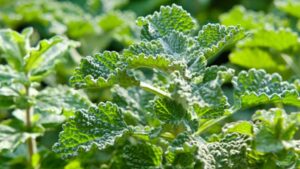
Horehound
Horehound The overall appearance of horehound is distinctive and somewhat rugged, making it a notable herb in both culinary and medicinal applications. With its square
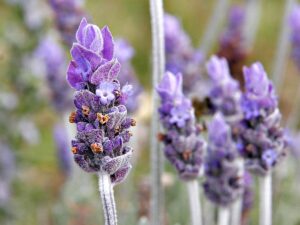
Lavender Flowers
Lavender Flowers Lavender flowers (Lavandula angustifolia) are cherished for their beauty, fragrance, and therapeutic properties. These small, purple blossoms grow in clusters on slender stems

Echinacea and its Evolving Role in Cold Treatment
Echinacea and its Evolving Role in Cold Treatment Echinacea, a vibrant purple coneflower, has a rich history in traditional medicine, particularly valued for its immune-boosting
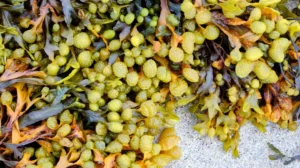
Bladderwrack
Bladderwrack Bladderwrack is a type of seaweed that has been used in traditional medicine for centuries. It is commonly found in the North Sea, the

Lavender-Infused Herbal Cookies for Relaxation
Lavender-Infused Herbal Cookies for Relaxation These lavender-infused cookies provide a delicious way to relax and unwind. Perfect for a calming snack before bed or a
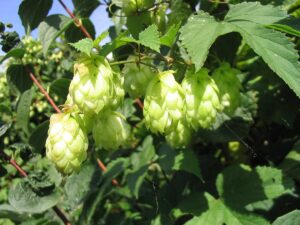
Hops Flowers
Hops Flowers Hops flowers are known for their distinctive appearance, fragrance, and various applications, particularly in brewing and herbal medicine. The cone-shaped flowers, harvested from